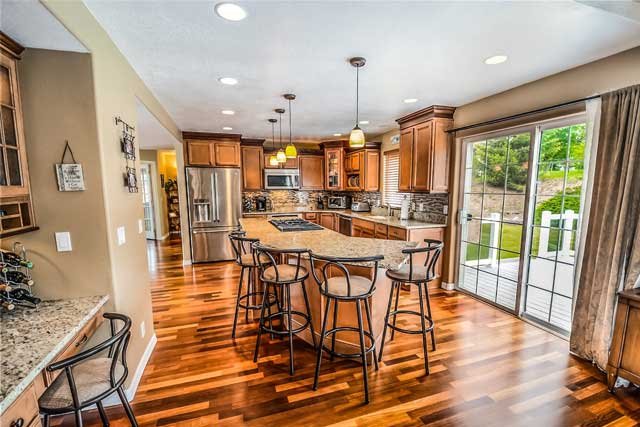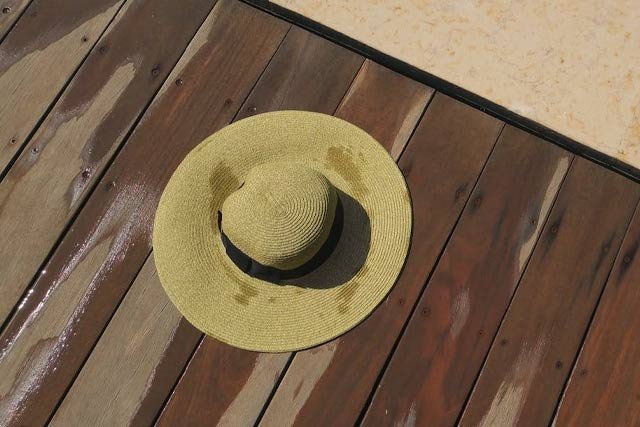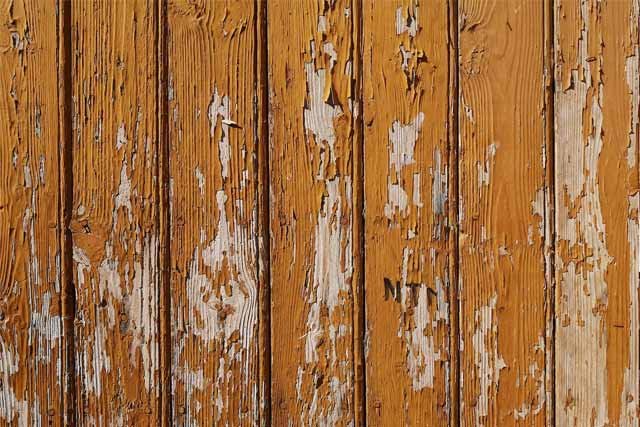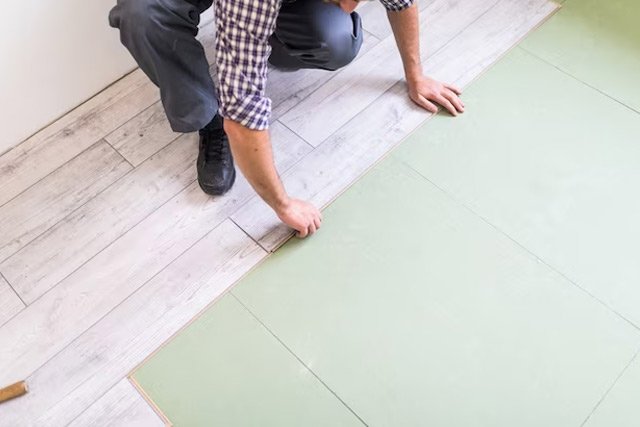
Wood responds to environmental conditions by expanding and contracting. Severe expansions and contractions may cause your floors to become uneven, a phenomenon known as buckling.
Even floors that are carefully prepped and properly sanded can suffer from buckling. Fortunately, there are some things you can do to fix uneven floors.
Moisture

Wood is hygroscopic, absorbing and releasing moisture as atmospheric conditions change. Exposing solid wood floors to excessive moisture for an extended period of time can lead them to expand and warp. This can cause floors to be uneven, crowning, or lifting of the quality flooring. The most severe type of damage is buckling, which will require sanding and refinishing or, in some cases, complete replacement.
Many factors can cause excessive moisture build-up in floors. The most obvious is water damage from a recent flood or spills not quickly cleaned up. But this moisture can also come from various other sources, such as leaking appliances, wet subfloors, or changes in humidity.
If the moisture damage is not too severe, the floors may recover once the air and floorboards are dry. The best fix to these uneven floors is to wipe up any visible water and then use a dehumidifier to remove excess moisture from the air and the boards. Then, wait a few days to see if the buckling has receded. Cupping, a type of moisture damage in floors, arises from excessive moisture that swells the board edges, causing them to rise. It can result from wet mopping, plumbing leaks, or extreme humidity.
To counter cupping, remove visible moisture, use a dehumidifier and fan, and avoid placing furniture on hardwoods. This prevents future issues and allows boards to normalize. If straightening takes longer, sanding, refinishing, or replacement might be necessary. Addressing the root cause, like repairing leaks or drying the space, is often essential.
Humidity

Seasonal humidity shifts can harm wood floors. Excess humidity yields issues like cupping, crowning, and larger uneven areas needing replacement. Buckling may stem from flooding, leaks, or prolonged high moisture in floors. Swift spill cleanup is a key defense. Wood absorbs water promptly, yet if left amidst the dirt, moisture lingers, inducing board swelling and potential mold growth.
Another way to prevent excessive moisture is to choose narrower planks over wider ones. Narrower planks shrink and swell less, making the gaps between them less noticeable when dry. Ensuring proper acclimation of any new wood before installation can also assist in reducing the impact of a damp subfloor on your hardwood floors.
Finally, a carpet installation can be very beneficial in preventing wood floorboards from seasonal humidity. Signs of moisture damage to a floor include buckling, cupping, crowning, warping, and lifting. These problems can be difficult to spot, especially when caused by gradual changes in moisture levels.
Speed bumps are a common form of buckling that can occur in one area or spread across the whole floor. They are small lumps of a few boards that are visually annoying but can be uncomfortable to walk on and create tripping hazards. This uneven floor can be repaired by replacing the affected boards and sanding the rest of the floors to flatten them.
Fixing uneven floors can be complicated, but restoring a damaged floor to its original condition is usually possible. To help fix the uneven floors in the future, you should clean your floors regularly with a non-abrasive cleaner that’s safe for wood. Maintaining proper humidity levels in your home and keeping a dehumidifier in use during the winter is also important.
Temperature

A floor that has been professionally refinished and is properly cared for should remain in good condition. However, the changes in temperature and humidity in a home can cause wood to shift and expand, sometimes to the point where it feels bumpy. This is called cupping, crowning, or warping and can range from a minor problem with only one or two planks to an entire floor that appears wavy or uneven.
When the relative humidity in a home rises, the wood absorbs that moisture. Eventually, the wood reaches an equilibrium and no longer swells or contracts, but this doesn’t always happen. Changing temperatures, especially in the winter, can throw this equilibrium out of balance and cause wood to shrink or swell, which causes it to feel bumpy.
While many things can cause floors to be uneven, the most common is water damage. This can come from leaks, flooding, excessive mopping, or improper cleaning methods. The water can seep into the boards and make them swell. This can be a very serious issue that may lead to the need for board replacement or even structural damage.
Another cause of uneven floors is improper installation. When a wood floorboard is not acclimated to the environment before it’s installed, it can’t adjust to the humidity and temperature conditions that will affect it. Additionally, if the installer fails to leave enough expansion gaps between the boards, the wood can’t move freely and may buckle.
If you’re experiencing wood flooring issues, contact a professional to assess the situation and find the right solution. Whether buffing and waxing or a full refinish, a professional can help you determine the best action to fix these uneven floors. If the buckling is severe or irreparable, a professional can replace the affected boards and provide other restoration services as necessary.
Subfloor

When laying floors, a strong subfloor is a foundation that provides a stable place for your solid or engineered planks to rest. If the subfloor isn’t up to the job, it can cause problems for your new floors.
A subfloor can be wood, plywood, or OSB (oriented strand board). Plywood is the most common and the best choice for most hardwood flooring installations. A tongue-and-grooved plywood subfloor is often recommended to reduce squeaks during installation and for a stronger surface lasting longer.
The thickness of the subflooring material is important as well. A thicker layer is typically better. In most cases, a subfloor should be at least 3/4 inch thick to be appropriate for a hardwood floor. A thickness of 5/8 inch is also acceptable.
Moisture can cause problems with any wood floor, but it’s especially problematic for solid and engineered wood floors. The wood can swell or even warp when exposed to excessive moisture for a long period of time. This can lead to your floors’ crowning, lifting, and cupping.
Crowning lifts board edges above the center, visually displeasing and hazardous if persistent, requiring damaged board replacement. A soft subfloor can result from water damage, aging, or a lack of a vapor barrier. Loose nails exacerbate the issue. When adding hardwood over existing floors, have a pro assess subfloors for moisture. Before installation, dry them through professional or DIY methods like insulation, tar paper, or red rosin paper.








